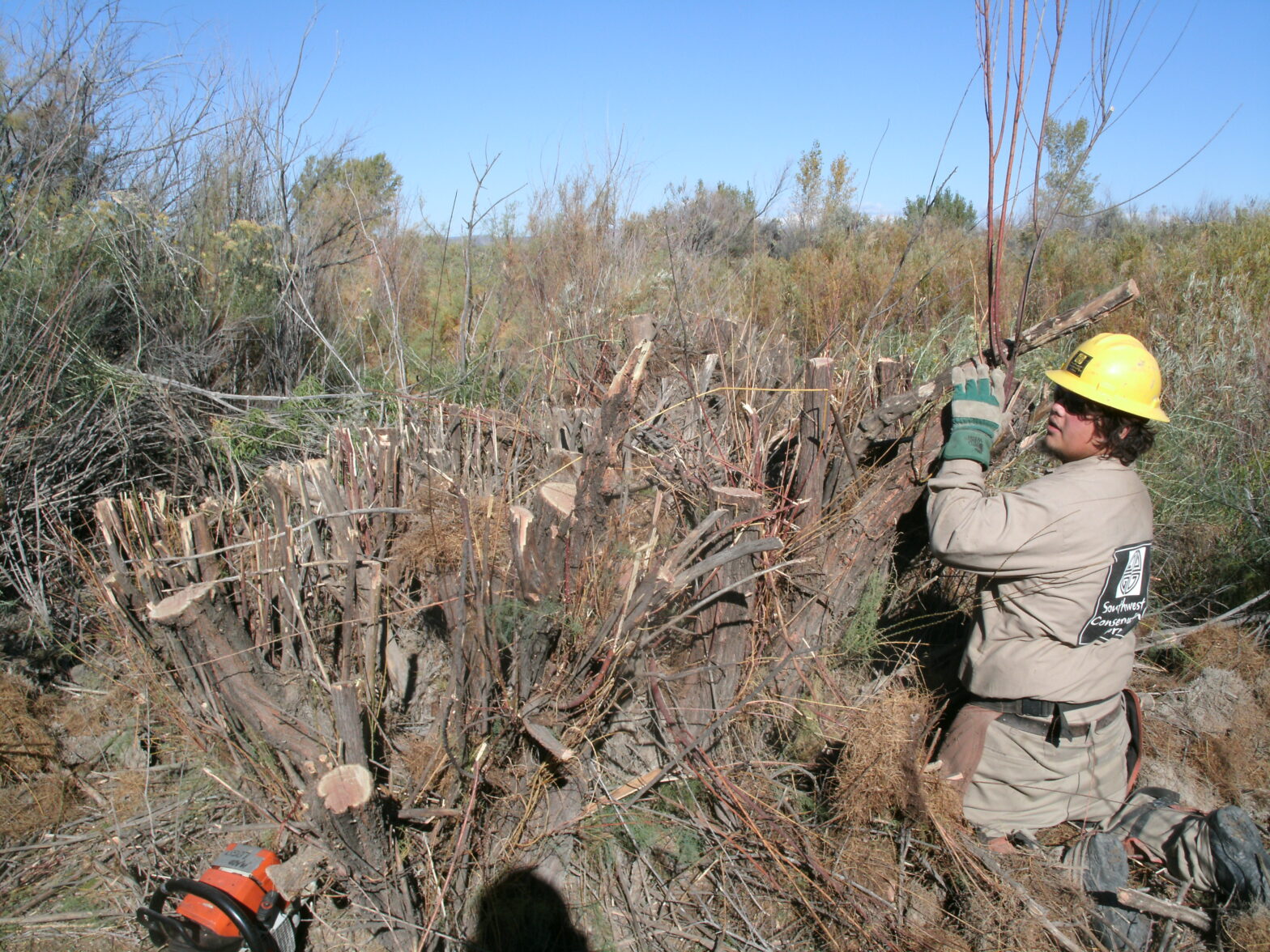Dolores River Restoration Partnership (DRRP), A Collaborative, Community-based Approach to Watershed Restoration
Organization: Southwest Conservation Corps
Country: United States
Other Organizations Involved:
- The Nature Conservancy
- The Tamarisk Coalition
- Bureau of Land Management
- Natural Resources Conservation Service
- Walton Family Foundation
- Partners for Fish and Wildlife
- County Weed Managers
- Canyon Country Youth Corps
- Western Colorado Conservation Corps

Background
Along the Dolores River, the invasion of tamarisk is a particular focus for land managers due to its extensive growth patterns which can displace native vegetation and affect the health and sustainability of these vegetative communities.
Historic diversions have altered traditional flow regimes and divert much of the watershed’s flow to the San Juan River watershed in southwestern Colorado. As a result, the conditions that support a natural riparian vegetative community on the Dolores River have been highly altered. The health of these plant communities is vital, as they protect water quality, provide wildlife habitat, provide important recreational opportunities and can support sustainable grazing practices.
Goals
DRRP's Five-Year Goals are:
- Ecologic – increase the number of sustainable, healthy, riparian plant communities while reducing those dominated by tamarisk and other invasive, non-native plant species.
- Social – foster greater comuunity involvement and understanding of the benefits of restoration efforts; improve aesthetic enjoymentfor the public.
- Economic – increase employment opportunities for contractors and youth service corps; develop a professional, competitive and efficient work force.
- Management – manage adaptively, incorporate education.
Main activities
Treatment of tamarisk and planting of native species on both private and public lands along the entire Dolores Watershed. Young adults from throughout the region will be engaged in restoration activities and job training to enhance community inolvement. Restoration efforts are planned to occur on 2,050 riparian acres of the Dolores River from McPhee Dam to the confluence with the Colorado River (175 miles) by 2014, at a projected cost of $3.7M.
Results
A Dolores River watershed dominated by native vegetation, where the threats from tamarisk have been mitigated and the riparian areas of the watershed continue to become more naturally functioning, self-sustaining, diverse, and resilient over time. Young adults from the region will accomplish meaningful restoration work in their "backyard" while gaining valuable job skills and resources to continue their education.